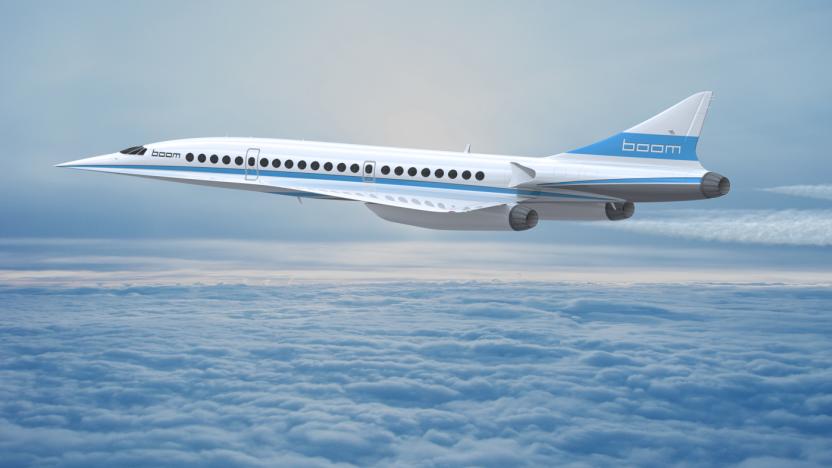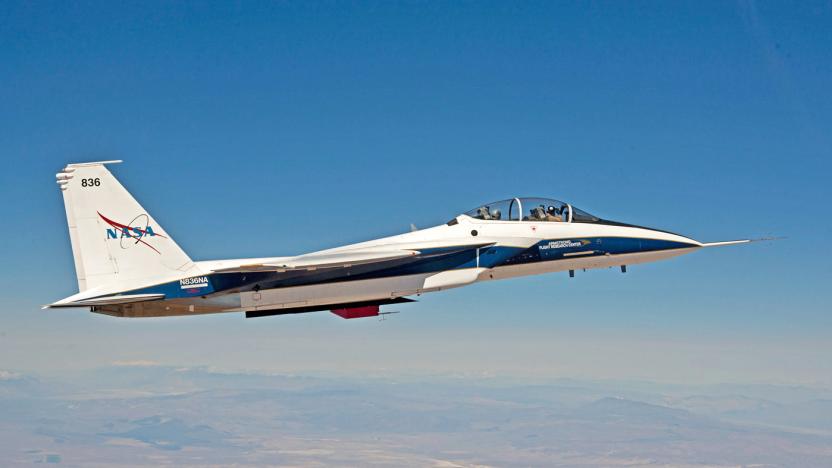sonicboom
Latest

NASA will publicly test quiet supersonic technology in November
You won't have to wonder what NASA's quiet supersonic technology sounds like in person -- if you live in the right part of Texas, that is. The administration plans to conduct a series of public tests around the coastal city of Galveston in November. The F/A-18 Hornet aircraft at the heart of the tests will perform dive maneuvers that produce louder sonic booms out at sea, while quieter sonic "thumps" will take place over Galveston proper. After that, "at least" 500 local volunteers will provide feedback on what they heard, while audio sensors will provide more definitive noise readings.

Boom's supersonic jets will pick up where the Concorde left off
Boom founder and CEO Blake Scholl wants passengers to break the sound barrier. Since the demise of the supersonic Concorde passenger jet, commercial airlines haven't offered a quicker alternative to fly from point A to point B.

NASA probe should lead to quieter supersonic aircraft
There's a good reason why it still takes hours to fly cross-country: supersonic airplanes are still so noisy that it's utterly impractical to fly them over populated areas. That's why the Concorde was largely relegated to overseas flights, after all. However, NASA has a new sensor that could usher in an era of quieter supersonic aircraft. The Eagle Aero Probe (the device you see in the red housing above) measures air pressure changes right near where they occur during a sonic boom, giving a near-instantaneous sense of what's happening. Previously, the sensors were about 15 feet away in the radar dome -- not exactly helpful when you need real-time data to measure a shockwave.

NASA awards $100,000 grant for sideways supersonic plane concept, sonic boom not included
NASA isn't just interested in extra-terrestrial exploration, but in pushing the boundaries of atmospheric flight as well, which is why it's just awarded $100,000 in funding for the supersonic plane concept shown above. As you can see, the symmetrical plane is basically all wing, and that's because it has two different configurations based on how fast you want to go. For normal, subsonic flight, a plane needs a decent wingspan to get off the ground and sustain flight at lower speeds. But, when you want to go supersonic, large wings become a bit of a drag, which is where the concept's bi-functional design comes in. The plane begins its journey in the long-winged setup, but spins 90 degrees amongst the clouds to use its stubby wings for efficient faster-than-sound flight and "virtually zero sonic boom." Gecheng Zha from the University of Miami has been touting his concept for quite some time, but now he's got the cash to refine the design, run simulations and do some wind tunnel testing, with the potential for more funding in the future. Unfortunately, the concept is, at best, decades from becoming a reality, but we're sold on the ninja star-like design. Guile, however, is not impressed.


